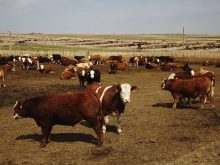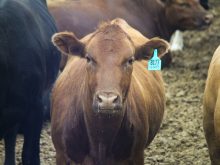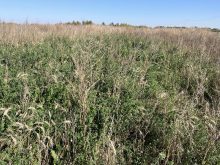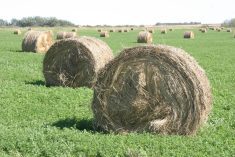TABER, Alta. – Burn it, bury it or sell it to Alberta is not what
farmers in this province want to hear about fusarium-infected grain.
As fusarium graminearum spreads westward, Alberta grain farmers worry
the destructive fungus might arrive on the wind or piggyback on feed
trucked from Manitoba.
“There is a concern that the grain, even though it looks healthy, could
have a disease problem,” said Alberta Agriculture crop specialist
Curtis Weeks.
A series of meetings being held across Alberta are focussing on the
Read Also
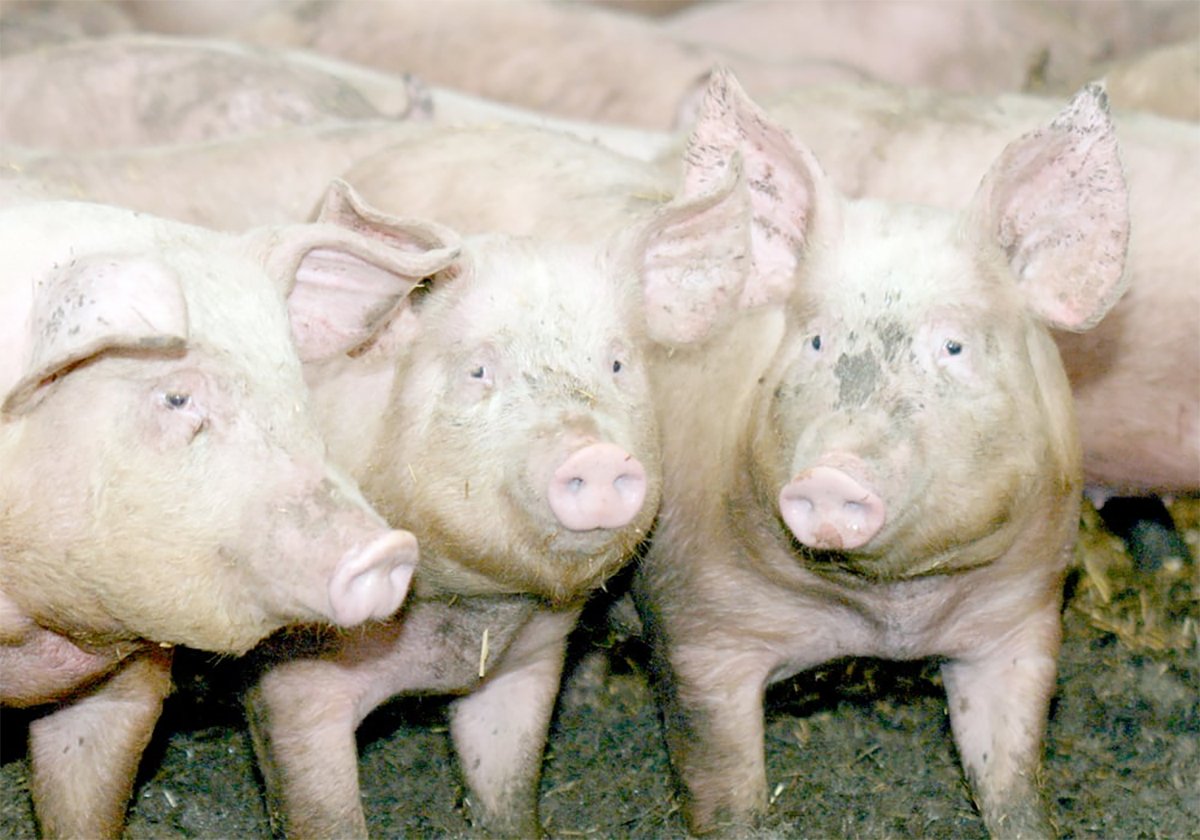
The Western Producer Livestock Report – November 13, 2025
Western Producer Livestock Report for November 13, 2025. See U.S. & Canadian hog prices, Canadian bison & lamb market data and sales insights.
impact of this disease and possible preventive measures.
Wheat, barley, corn and oats are all susceptible to fusarium damage.
During damp weather, the disease runs out of control.
Symptoms in wheat kernels are relatively easy to detect, but diseased
barley is more difficult to discern.
“You’ll have a hard time finding one kernel showing symptoms. When you
buy barley and it looks good, it may not be good,” said Randy Clear of
the Canadian Grain Commission.
Seemingly healthy kernels may contain toxins that create processing
problems for bakers, brewers and feed suppliers.
One of the toxins, called deoxynivalenal or DON, is unpalatable to hogs
and they refuse to eat infected grain.
Traces of the fungus in swine feed cause poor weight gain and poor
health. Another toxin called zearalenone causes reproductive problems.
It stimulates females to develop too soon and males to develop female
characteristics.
Alberta’s feedlots import barley from across Western Canada as well as
corn from the United States. While some feedlots demand disease-free
grain, there are no regulations saying it must be certified free of
fusarium.
The disease has already been detected in minute amounts in southeastern
Alberta since 1995, so crop researchers hope to buy time until controls
are found.
Agriculture Canada researchers are trying to find resistant strains.
There are 16,000 barley lines under investigation but plant breeding is
a slow process.
Corn has been linked to the rapid spread of the disease. There is
little grain corn grown in Alberta but more than one million bushels
have been imported from the U.S. where fusarium has been destroying
crops for many years.
Growers must learn to recognize the disease, scout fields, use
certified treated seed and practise rotations so cereals are not
planted in the same field every year.
Those buying corn or grain should insist delivery trucks are well
cleaned. Often fertilizer is backhauled and even a few infected kernels
left in the corners could transport disease.
“Truckers have got to be encouraged to clean very well before they put
something else in those trucks,” said Weeks.
Preliminary research in Alberta shows the disease is killed when it
passes through cattle rumens. Seeds passed in the manure do not appear
to carry the fungus if they sprout as volunteer plants.
The greater concern is for spills around feed bunks and delivery areas.
That grain must be disposed of properly to guard against the spread of
disease.
Composting at temperatures between 60-70 C eradicates the pathogen. It
may prove an effective method for getting rid of potentially infected
grain.
Alberta has declared fusarium graminearum a pest. It is monitoring
incidence but no one is sure who has final responsibility to ensure
grain is clean before it crosses into Alberta.
The responsibility may rest on municipal governments whose
agricultural services boards control pests such as noxious weeds.
Farmers are also encouraged to test grain at private labs. Test costs
are split between the farmer, who pays $20, and the province, which
pays $25.
Fusarium graminearum was first recognized in 1920 and has been found
throughout the temperate grain growing regions of the world. Until the
mid-1980s, crop experts thought the disease would not grow into a
serious problem and recommended careful rotations by planting
non-susceptible crops as a control.
For more information on this crop pest, visit www.producer.com.




